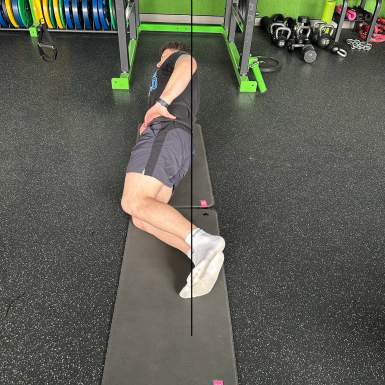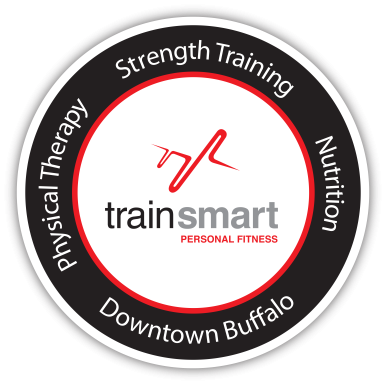By Joe Gagliardo and Jared Rumsey
Hip Mobility
Shin Box
When performing a shin box, it's important to test each side for any discomfort or pinching in the hips, indicating potential issues with hip mobility or stability. Side planks and heavy carries are beneficial for correcting any pinch in the hip. Additionally, activating the external muscles can help internally rotate the hip, improving overall hip function and movement.
Half Kneeling Hip Flexor Stretch
When performing this stretch, it's important to differentiate mechanical sensitivities between the two sides. This involves assessing if one side feels tighter or more restricted than the other, which could indicate asymmetries in hip mobility or potential issues such as muscle tightness or joint restrictions. By observing any differences in sensation or range of motion between the sides, you can tailor your stretching or corrective exercises accordingly to address any imbalances or weaknesses.
Kneel Forward and Back Rock (Quad Rock)
When assessing this movement, be aware of any arches in the back, which may indicate an unstable or inactive core. Ensure that the core muscles are engaged to maintain proper alignment and support the spine. Additionally, observe if there is a difference in the ease of movement or the intensity of the stretch between the sides, as asymmetries may indicate imbalances or weaknesses that need to be addressed.

Transverse Abdominis
Side Bridge
When assessing the side bridge, make sure that the hips, shoulders and ankles remain aligned throughout the exercise. Make sure the hips are high enough off the ground and the glutes are activated. For the mass population they should be able to perform this exercise for 60 seconds. If this exercise is too easy you may progress them to a harder variation. Such as a side plank, side plank with stacked feet, copenhagen, and plank rolls. The side bridge and its variations are helpful when the shin box test is positive for mechanical sensitivities.
Glutes
Glute Bridge
The glute bridge is performed by lying on your back with your knees bent and feet flat on the floor, hip-width apart. Engage your abs and glutes, then lift your hips off the ground until your body forms a straight line from your shoulders to your knees. When assessing the glute bridge, observe proper form to ensure that the body maintains a straight line from shoulders to knees in the lifted position, avoiding overarching the lower back or allowing the hips to sag. Check for engagement of the abs and glutes throughout the movement to protect the lower back and prevent discomfort. Also, note the position of the feet: heels down or toes up emphasize the hamstrings and glutes, while toes down or heels up target the gastrocnemius and soleus muscles in the calves. For progressions, consider the glute bridge walkout and single-leg glute bridge. With the single-leg variation, lift one foot off the ground while maintaining the bridge position, further challenging a patient's anti-rotation stability and targeting each side independently. For the glute bridge walkout, perform a glute bridge and then extend one leg at a time, straightening it out along the floor before returning to the starting position. This variation targets the hamstrings more intensely while also challenging stability.
Lower Extremities
Door Handle Squat
The door handle squat is a simple yet effective movement assessment that can reveal a lot about an individual's mobility and overall function. To perform the door handle squat, hold onto a door handle or stable object in front of you for support, then squat down as low as possible while maintaining proper form. When assessing this movement, observe several key factors: ensure feet are about shoulder-width apart and stable throughout the movement, watching for any excessive movement or instability which may indicate issues with ankle mobility. Pay attention to the knees; if there's any pain or discomfort, it could signify potential issues. Check for any pelvic shifts or tilting, and note any signs of butt wink or excessive extension in the mid and low back. Additionally, assess overall mobility in the hips, ankles, and knees. If the movement is not aesthetically pleasing but painless, it may still be acceptable as painless dysfunctions are areas that need to be addressed to improve movement patterns and potentially help with their mechanical sensitivities and chief complaint. This movement can be progressed to body weight squats, chair squats (so the patient can have a target) and goblet squats.
Split Stance Squat
The split stance squat is a dynamic exercise that can be performed using TRX or bodyweight. Begin by positioning one foot forward and the other foot back, maintaining a split stance. The back toes should point forward to help keep the hips square; if they point outwards, it may cause rotation in the hips and low back. Lower the body down until the back knee is about an inch above the ground, ensuring the tailbone stays down and the front heel remains down. When assessing the split stance squat, observe several key factors: ensure proper foot positioning, with the back toes pointing forward to maintain hip alignment; check that the back knee is positioned slightly above the ground without touching it, and ensure the tailbone is down to protect the lower back. Additionally, monitor the stability of the front heel and assess whether the individual can maintain the position for 60 seconds, as this will indicate their endurance and strength in the exercise. To progress the exercise, try pulsing up and down while maintaining the split stance or try a single leg squat.
TRX Row
The TRX row is a strength exercise targeting the upper back, shoulders, and arms. To perform, hold onto the TRX handles with arms extended, feet hip-width apart, and body slightly leaning back. Throughout the movement, focus on keeping the chest proud and shoulders down and back, engaging the core for stability (maintain a strong plank position). Pull the body towards the handles by squeezing the shoulder blades together and bending the elbows, maintaining a straight line from head to heels. When assessing the TRX row, ensure the individual maintains proper posture with the chest lifted and shoulders pulled down and back. Check for open hips, indicating core engagement and spine alignment. Monitor the range of motion, ensuring the elbows are in line or slightly behind the back with each repetition. Lastly, observe for smooth, controlled movements to ensure proper muscle engagement and reduce the risk of injury. For progression of the TRX row consider inverted rows, and then single arm weighted rows (dumbbell, kettlebell, etc.).
Calf Raises
Calf raises target the tendons, ligaments, and muscles of the lower calf, providing shock absorption and spring-like function. For single leg calf raises, athletes typically aim to achieve 35 repetitions per set, while the normal population should aim to achieve 25 repetitions. It's important to ensure the soleus muscle is adequately strengthened for optimal performance and function. If someone needs to regress this movement they can perform it with both legs down, if they want to progress it they can make the movement slower (two seconds up, two seconds down) or add weight via a weighted vest.
Heavy Carries
Heavy single-arm carries involve walking while holding a heavy weight, usually a kettlebell or dumbbell, in one hand while keeping the torso upright and engaged. The weight needs to be heavy enough to challenge the core and stabilizing muscles, but manageable enough to maintain proper form. The chest should be proud, the head straight with eyes forward, they should hold the weight slightly away from their body and the opposite arm should be relaxed. You should ensure that the shoulders and hips are level.
This exercise is excellent for building overall core strength. It will help improve grip strength, posture and enhance unilateral transverse abdominis strength. It can also address imbalances between left and right sides of the body. Moreover, single arm carries are beneficial with patients who have mechanical sensitivities with their shin boxes. Single arm carries promote hip stability and strength, as they challenge the hips to stay level and stable while walking with the weight.
Consideration with Shoulder Injuries
When conducting functional test assessments for patients with shoulder injuries, it's crucial to recognize the interdependence between shoulder stability and a strong, stable spine. Understanding the posterior sling connection, consisting of the latissimus dorsi, contralateral gluteus maximus, and the interconnecting thoraco-lumbar fascia, is essential for designing appropriate exercises. Emphasizing push and pull movements can help strengthen the shoulder complex effectively. Beginning with exercises like TRX rows, progressing to push-ups, and potentially incorporating planks transitioning to standing planks can gradually challenge and rehabilitate the shoulder. Continuously monitoring the patient's comfort and response to the assessment is vital, allowing for adjustments as needed to ensure optimal progress and injury recovery.
Pain is not Always Mechanical
Pain isn't solely rooted in mechanical issues; it can stem from various sources, including stressors encountered at work or home, disrupted sleep patterns, and the management of emotional, social, and environmental factors. These non-mechanical influences are crucial to consider, as they can significantly impact the experience of low back pain (LBP). Stress, whether from professional responsibilities or personal relationships, can exacerbate LBP symptoms, while inadequate sleep or poor stress management strategies may further intensify discomfort. Additionally, emotional well-being, social support networks, and environmental conditions can all play pivotal roles in shaping an individual's perception and management of LBP. By acknowledging and addressing these multifaceted factors, healthcare practitioners can adopt a more comprehensive approach to LBP treatment, ultimately promoting better outcomes and quality of life for patients.
Considerations for Older Patients
When conducting functional test assessments for older patients, it's crucial to establish a safe starting point tailored to their capabilities. While the fundamental principle remains consistent, the execution may vary based on individual needs and limitations. Ensuring the safety of elderly patients is a priority, with precautions taken to prevent falls and injuries throughout the assessment process. Monitoring heart rate and observing for potential symptoms, particularly in cases of deconditioning, is essential for safeguarding their well-being. Adjustments may be necessary to accommodate their abilities; for instance, if performing a shin box test poses challenges, alternative exercises like supine windshield wipers can be prescribed to improve hip mobility effectively and safely. This personalized approach acknowledges the unique requirements of older adults and aims to optimize their functional capacity while minimizing risks.
Acute Injuries
When conducting functional test assessments for patients with acute injuries, it's crucial to recognize that the evaluation process will be adjusted to accommodate their condition. Remaining within the guidelines established by their surgeon or other clinicians is essential to ensure their safety and well-being during the assessment. Acute low back pain (LBP) can be particularly challenging, often eliciting strong emotional responses from patients due to the intensity of their discomfort. Meeting them at their current functional capacity level is key, providing exercises and movements that they can tolerate without exacerbating their injury. However, it's important to acknowledge that the standard assessment strategy may need to be adapted to suit their specific circumstances, prioritizing their comfort and recovery throughout the process.
How Test Becomes Treatment
When It comes to the assessment process, functional tests and exercises take center stage, serving as the primary intervention. The goal is to identify the most challenging exercise or movement the individual can perform effectively and assign it as their homework. It's crucial to strike a balance, ensuring the task is demanding yet manageable, ideally ranking around 4 on the pain scale and 6-8 on the RPE scale. Consistency is key, with movements practiced as "snacks" throughout the day, totaling 4-6 sessions. Providing clear guidelines and relating each exercise to the patient's overarching goal enhances their commitment. Utilizing videos can offer visual feedback, aiding in form correction and reinforcing the exercise's importance. Upon their return, having them demonstrate the exercise assesses their compliance and progress, while reinforcing the significance of their efforts.
Movement Snacks
"Movement snacks" encapsulate the concept of integrating brief, frequent bouts of physical activity into daily routines to promote overall health and well-being. Rather than adhering strictly to structured workout sessions, movement snacks emphasize the importance of incorporating movement into various aspects of one's day. These brief intervals of activity, ranging from a few minutes to around ten minutes, can include simple stretches, bodyweight exercises, or even short walks. The beauty of movement snacks lies in their flexibility and accessibility; they can be performed virtually anywhere, whether at home, in the office, or during a break between tasks. By breaking up sedentary periods with these mini bursts of movement, individuals can combat the negative effects of prolonged sitting, improve circulation, boost energy levels, and enhance overall mobility. Moreover, movement snacks serve as a practical approach to overcoming common barriers to exercise, such as lack of time or motivation, making physical activity more achievable and sustainable in the long run. Embracing the philosophy of movement snacks encourages a shift towards a more active lifestyle, where movement becomes seamlessly woven into the fabric of daily life, ultimately contributing to improved health and vitality.



